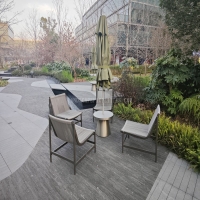Welcome to the website for landscape facilities products and knowledge.
What are the most common scenarios where the table’s design may require additional insulation or thermal protection?
Tables serve as fundamental surfaces across countless environments, but their standard designs are not always sufficient. Specific operational scenarios demand the integration of additional insulation or thermal protection to ensure safety, preserve material integrity, and maintain functionality. Understanding these common situations is crucial for selecting the right table for the job.
One of the most frequent scenarios involves tables subjected to high-temperature processes. This is prevalent in industrial settings such as welding stations, metal fabrication shops, and laboratories using hot plates or Bunsen burners. A standard wooden or plastic laminate tabletop can easily scorch, melt, or even ignite upon direct contact with hot objects or open flames. In these cases, tables with specialized tops made from materials like refractory cement, ceramic fiber boards, or thick steel plates with air gaps provide essential thermal barriers, protecting the table's structure and preventing workplace fires.
Similarly, in scientific and research laboratories, thermal protection is paramount. Experiments involving precise temperature control, such as those using heated baths, ovens, or sensitive electronic components that generate heat, require stable, non-conductive surfaces. An insulated table prevents heat transfer that could skew experimental results, damage delicate instruments, or create a safety hazard for personnel. Here, tables with chemically resistant and thermally insulating tops are indispensable.
The realm of electronics assembly and repair presents another critical scenario. Soldering and desoldering components involve concentrated heat from irons and rework stations. A non-flammable and heat-resistant table surface is necessary to prevent accidental burns to the table and potential damage to other circuit boards or devices nearby. Specialized ESD (electrostatic discharge) workbenches often incorporate thermally resistant zones specifically for this purpose.
In commercial food preparation, tables near cooking equipment like grills, fryers, or steamers are constantly exposed to radiant heat and occasional spills of hot liquids or oils. Insulation in this context helps maintain a safer surface temperature for workers and protects the table from warping or degradation. Stainless steel tables, while durable, can still transfer heat; therefore, designs with insulated cores or air-filled cavities are sometimes used in high-heat zones.
Finally, any application involving the temporary placement of high-temperature equipment, such as catalytic converters fresh from a vehicle or hot chemical containers, necessitates a protected surface. A simple table without adequate insulation can be permanently damaged in a single use. For these intermittent but high-risk tasks, having tables with integrated thermal protection or using removable insulating mats becomes a vital practice for operational longevity and workplace safety. In essence, whenever a task introduces significant heat, the table's design must be evaluated for its need for additional insulation.
Related search:

Recommendation
Metal structure rattan chair without armrests for single person, with woven seat and backrest.